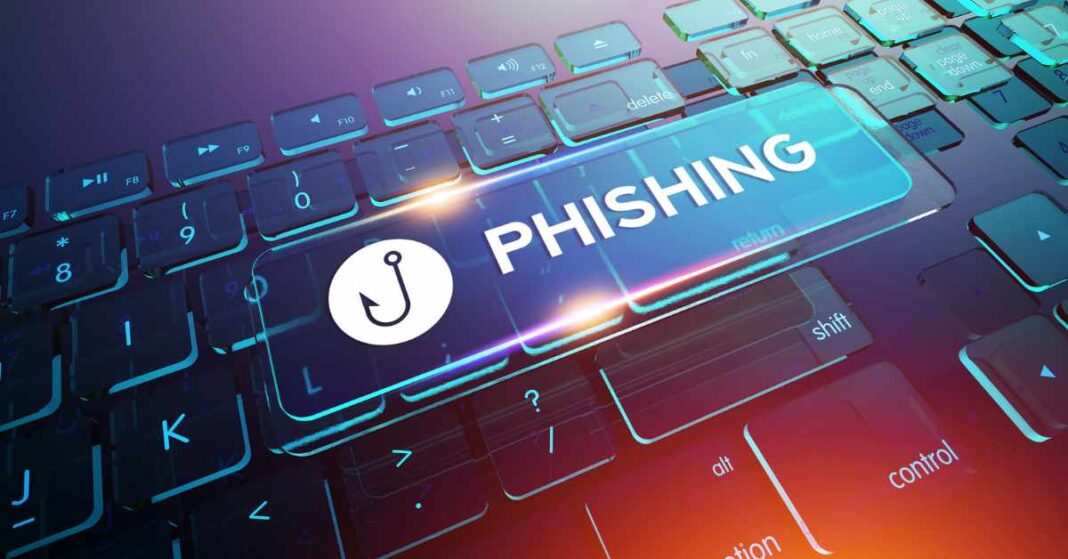The last year has been the most prolific in terms of cyberattacks, and consequently, it is not surprising that in 2023, more companies will fall victim to cyberattacks.
In these unsettling times, it’s important to ensure your business is as cyber-secure as possible, so here’s one of the most common forms of scam: phishing.
What is phishing?
Phishing is creating a “lure” that invites employees to take action, such as clicking a link. This usually happens via email, but recently there has also been an increase in SMS phishing, which is suspected to be due to the pandemic.
Phishing scams take the form of communications that appear to come from trusted sources, such as healthcare providers, the government, the police, or popular shopping sites. They often claim that the recipient owes money, has not paid a bill on time, or even has a warrant out for their arrest.
The message will include a link or attachment that prompts the recipient to complete an appropriate action, such as “Pay here” or “Visit our website.”
However, if the recipient completes this action, what usually follows is their bank details being leaked to the cybercriminal or malware being injected into their device. Both are extremely difficult to solve.
As you can imagine, this process is particularly scary for older people or those with a lower level of computer literacy. Still, it affects all areas of the Internet, including businesses.
There are several different types of this phenomenon, but at its core, “phishing” is synonymous with fraud. People who do this prey on people’s anxieties about using the Internet or about something happening to their money or even their loved ones.
It’s an egregious practice, and it’s incredibly important to recognize the effects it can have on your business and your employees.
What are the effects on your business?
The types of phishing scams that target businesses differ from those that target individuals.
Instead of pretending to be from one of the entities above, scams targeting businesses will disguise themselves as auditors, accountants, or even managers. Rather than clicking a link, the action part will often take the form of an image or PowerPoint attachment.
This is where it gets especially tricky.
We all know how important SEO management is for the company. Cybercriminals know it too. Instead of stealing your money, they can attach malware that will automatically leave spam or negative reviews of your business, lowering your SEO and ruining your reputation.
This is particularly dangerous for companies running a SaaS SEO strategy because they already run almost exclusively online, and as a result, cyberattacks like these can be especially damaging.
This may sound a bit like a death sentence for your business, but don’t panic. We have some tips to minimize the risk of phishing scams and keep your business as safe as possible online.
Running a successful phishing test.
Regarding protection against phishing scams, phishing tests are one of the most effective methods. They provide a real-life experience for your employees, so they’ll know exactly what to do if they come face-to-face (virtually) with a real scammer.
Involving?
Phishing tests are simulations for your business. In short, a fake phishing campaign created by a small team will be sent out, usually via email, to test how your staff can detect suspicious content.
After a certain period, everyone will be informed. Those who “dropped in” receive additional training to detect malicious communications, and those who didn’t receive a basic rundown of what to look for.
Tips for optimizing a phishing test
That’s all in a nutshell, but here are some tips to optimize your phishing proof:
Communication is key: Your communication plan must be solid when setting up these simulations. Otherwise, you risk your team going into a mass panic. Agree with them in advance about how many emails you plan to send when they will be sent, and to whom. It’s important to stagger your release. Otherwise, your employees might become suspicious.
Quality control: The quality control process is crucial for these campaigns. A robust quality assurance procedure will optimize the success of your phishing simulation. In fact, these training exercises improve your company’s overall quality assurance.
Think about it: The less your business falls victim to these scams, the less your SEO will be affected, and the better your overall ratings will be. Consider using features like an automated QA service to ease the stress and allow you to focus on other areas of your campaign, such as the content and analytics work that will follow.
Analysis: Once you’ve sent your campaign, you’ll need to keep track of who’s taking the bait. How long do they leave the email before completing the action? Do they take any steps after this? Consider hiring an RPA developer or similar, especially if your company has many employees. You could establish a program that classifies your workers into categories, differentiating those who have taken the bait and those who have not. Regardless, it always pays to automate things as often as possible, especially if your business mostly operates online. It’s faster, it reduces human error, and the cost is almost always a worthwhile investment.
Question: We’ve discussed the importance of being honest with your workforce after the campaign is over, but what is the best way to do it? It would help if you could communicate with everyone face to face. People are more likely to remember your training if it’s delivered in person, so there are better courses of action here than emailing. However, phone calls are a good compromise because your employees can hear a voice and ask questions in real-time. If you have many employees, consider using the stand-up method. That means holding a series of informal meetings with small groups of people. They are easier to manage, you can make sure everyone knows all the important points, and you create a friendly environment. Stay as safe as possible.
Now what?
Once you have completed testing your phishing campaign, you have no choice but to do it again. And again. And maybe even after a while.
As we said, times are always changing. Scammers are constantly coming up with new and improved ways to trick people, and you’ll need to stay vigilant if you want to keep safe. We recommend running a campaign roughly every year to give yourself the best chance of optimizing your company’s Internet security.
- Common sense.
- Education.
- Read the signs.
- Report anything suspicious.
These are all things that are critical to keeping your employees and your business safe from fraud. Encourage common sense (i.e. is the email realistic or is it downright fake?), educate your staff about signs of malware or bad intent, and make sure your people know to report anything that looks malicious.
If you follow these steps and the tips above, you will have the best chance of beating cyber criminals.
Remember: Companies are made of humans, and humans can make mistakes. Unless robots run your business, there will always be a margin for human error. Minimizing this as much as possible creates a stronger, more cohesive company.
Also Read: What is Cybersecurity Audit














